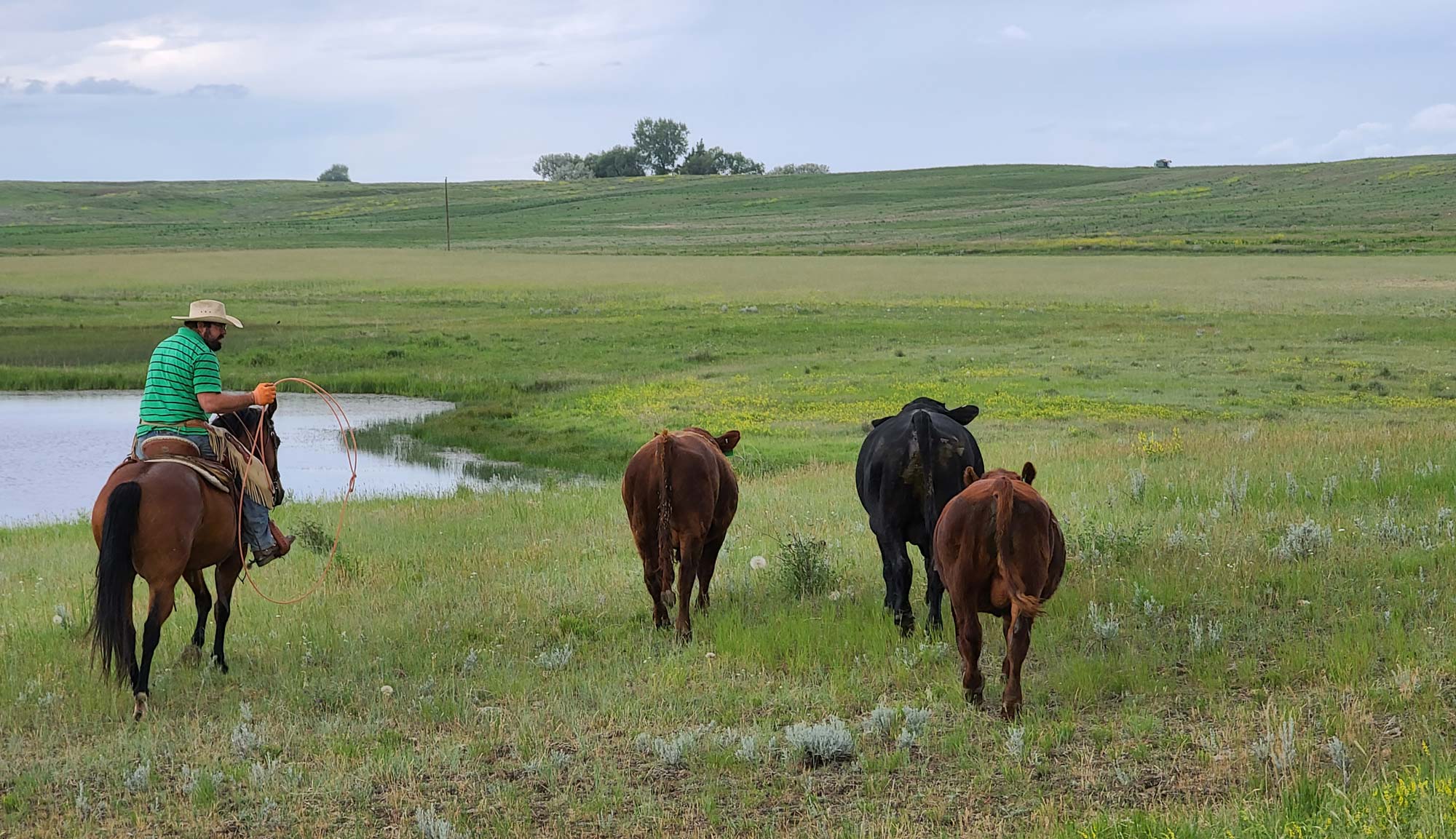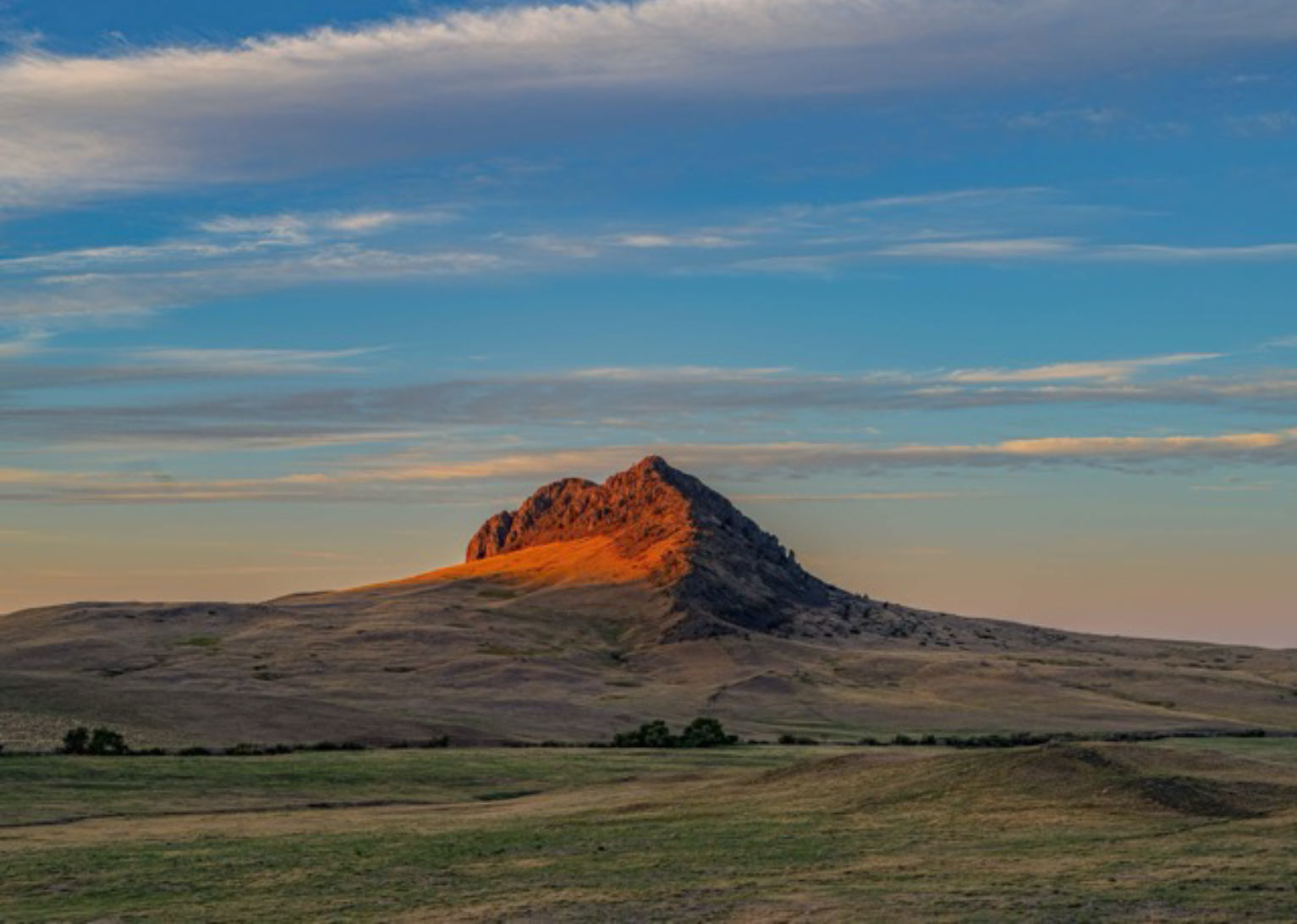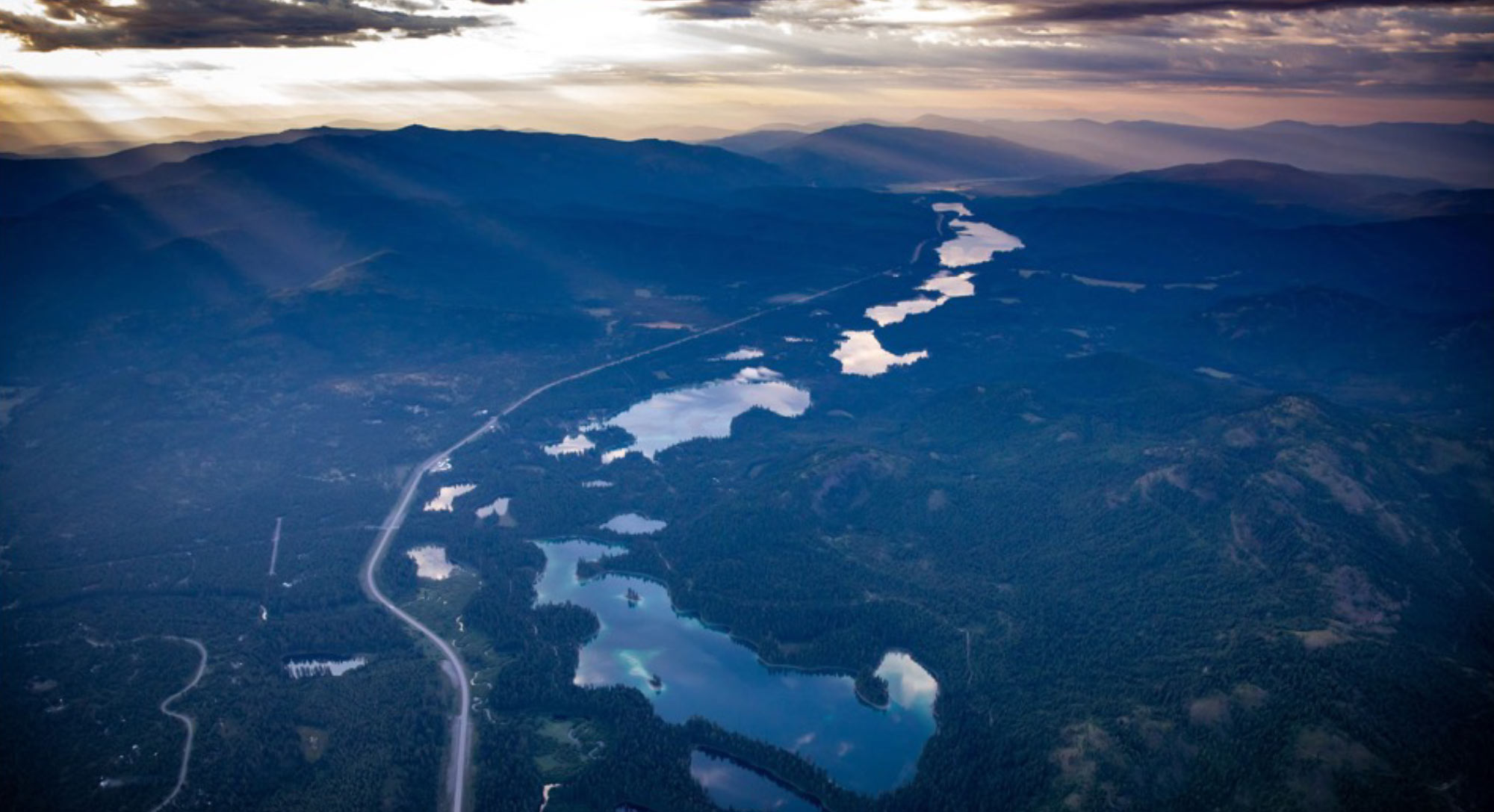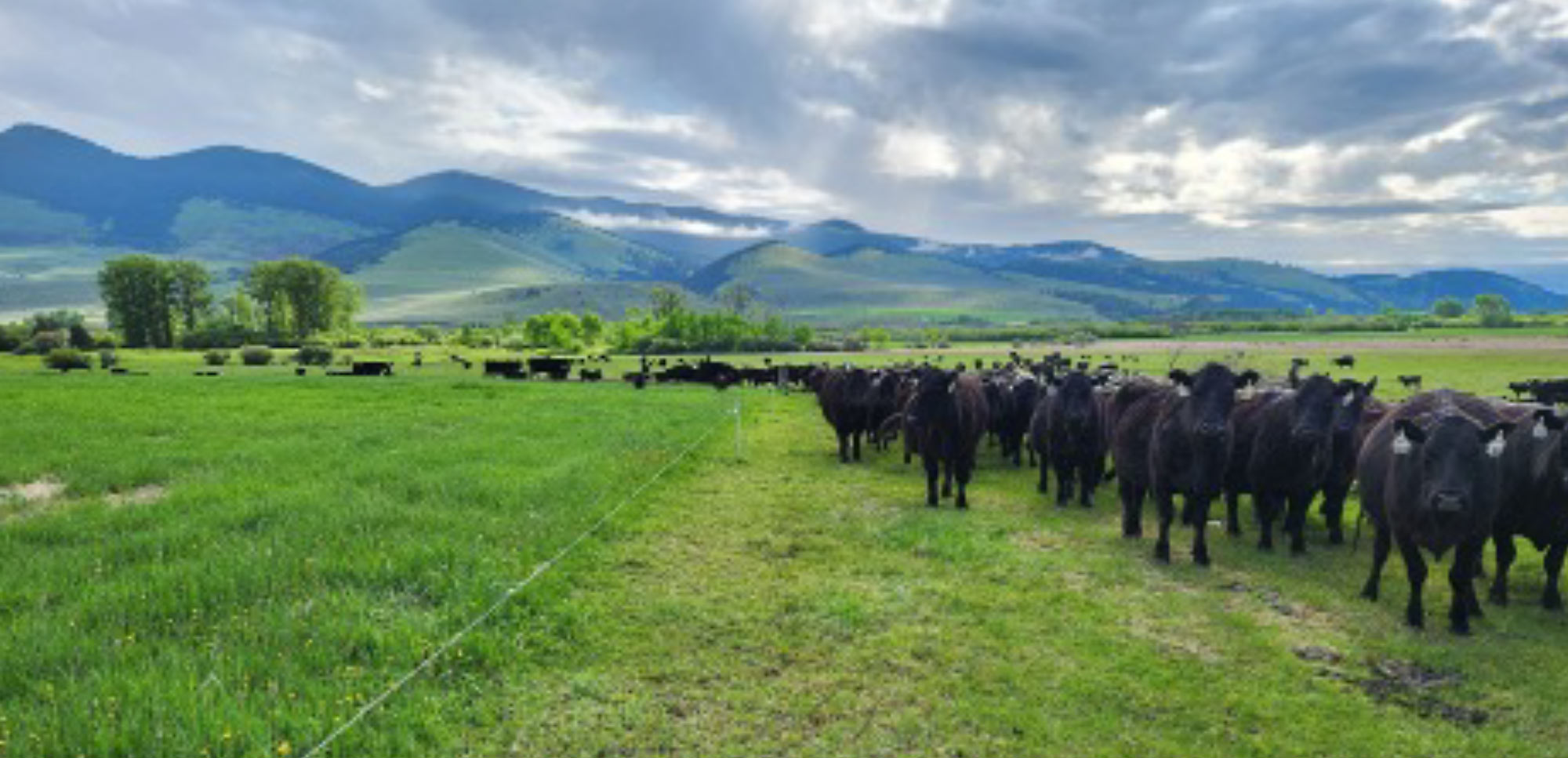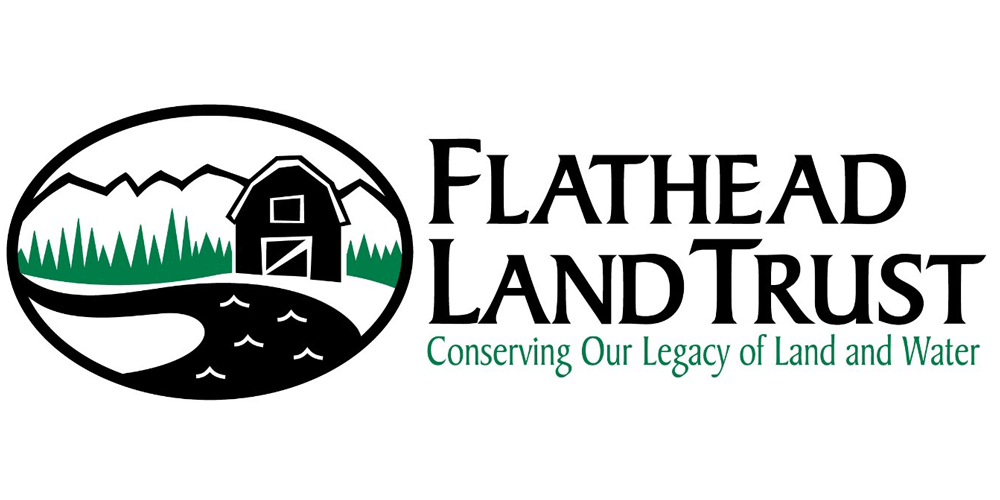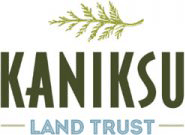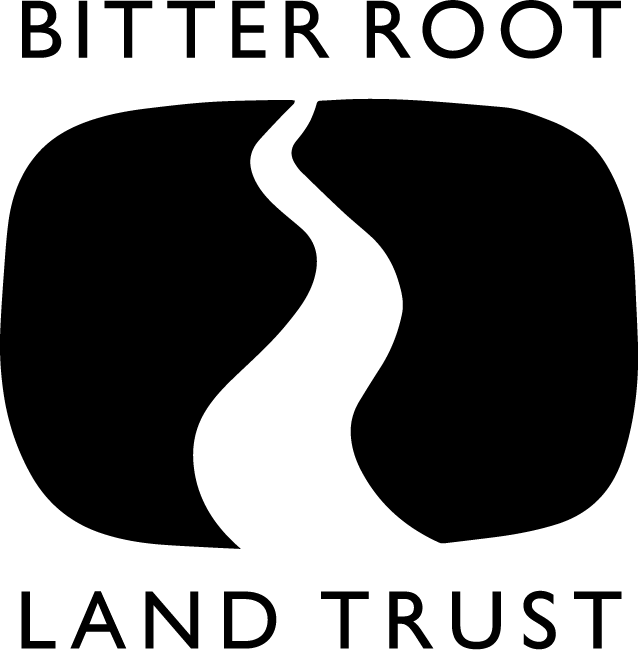The Newest Solution to the Challenges Facing Montana’s Ranches and Farms
At The Nature Conservancy’s Matador Ranch, a pioneering grassbank, ranchers find ways to keep their working lands viable and the community strong.
After living in Montana for nearly twenty years, Clifford Merriman, like a lot of folks here, developed a love for ranching. In 2012, Clifford, 42, and his wife purchased a farm in Phillips County, fifteen miles south of Malta, with a down payment loan from the Farmer Service Agency (FSA) that was enough to cover the cost of equipment and operating expenses. Starting a ranch is challenging, especially in this area where runnable ranches cost around $5 million. Rising land prices, driven by out-of-state investors, make it difficult for young people to manage farming costs.
The Merrimans initially started organic farming: spring and winter wheat, barley, winter rye, safflower, lentils, yellow peas, garbanzo beans, flax and canola, but expanded into cattle ranching as a financial move to stay on the place —but they didn’t have enough range for a large herd. They had only ten cows on their property, which wasn’t economically viable given equipment costs have quadrupled in the last decade and a half. The family still struggled with soaring costs and limited resources.
“It looked like it would be years before we saw a substantial profit due to tax liabilities,” Merriman said. “Since we needed to meet land payments, we might find ourselves in the red, with little left for food, and facing a heavy tax burden. If we engaged in equipment trading, we risked sacrificing our retirement savings – a common struggle among many farmers and ranchers.”
Then, they were invited to run cattle on the Nature Conservancy’s Matador Ranch, a new cooperative ranch south of their home. TNC uses the ranch as a cooperative grassbank, a unique partnership offering ranchers grazing access in exchange for practicing sustainable measures on their home ranches. Ten to fifteen members, who are local ranchers, can sustainably graze their one-hundred-head units of cows and calves during spring, summer, and fall.
The Matador has been a saving grace for the Merrimans, helping them expand their cattle operation and save money they can put toward equipment costs. It’s allowing young ranchers to continue in a Montana way of life from which they would otherwise be shut out.
Montana is currently facing unprecedented challenges to its agricultural scene. As the state’s population grows exponentially, land prices soar, farm equipment costs continue to rise, and many ranches and farms have been forced to shutter businesses. The threat of subdivision looms over many of Montana’s intact working lands. Unable to see a feasible future, children of working farmers and ranchers are leaving rural life to head to urban centers. But there are also significant glimmers of hope today.
In addition to voluntary private land protection tools like conservation easements (also known as land protection agreements), landowners are developing new and innovative solutions to enable farmers and ranchers to keep working lands in the family. The Matador Ranch is one such solution, and it doesn’t just help keep farms and ranches viable; it strengthens the community through mentorship and cooperation.
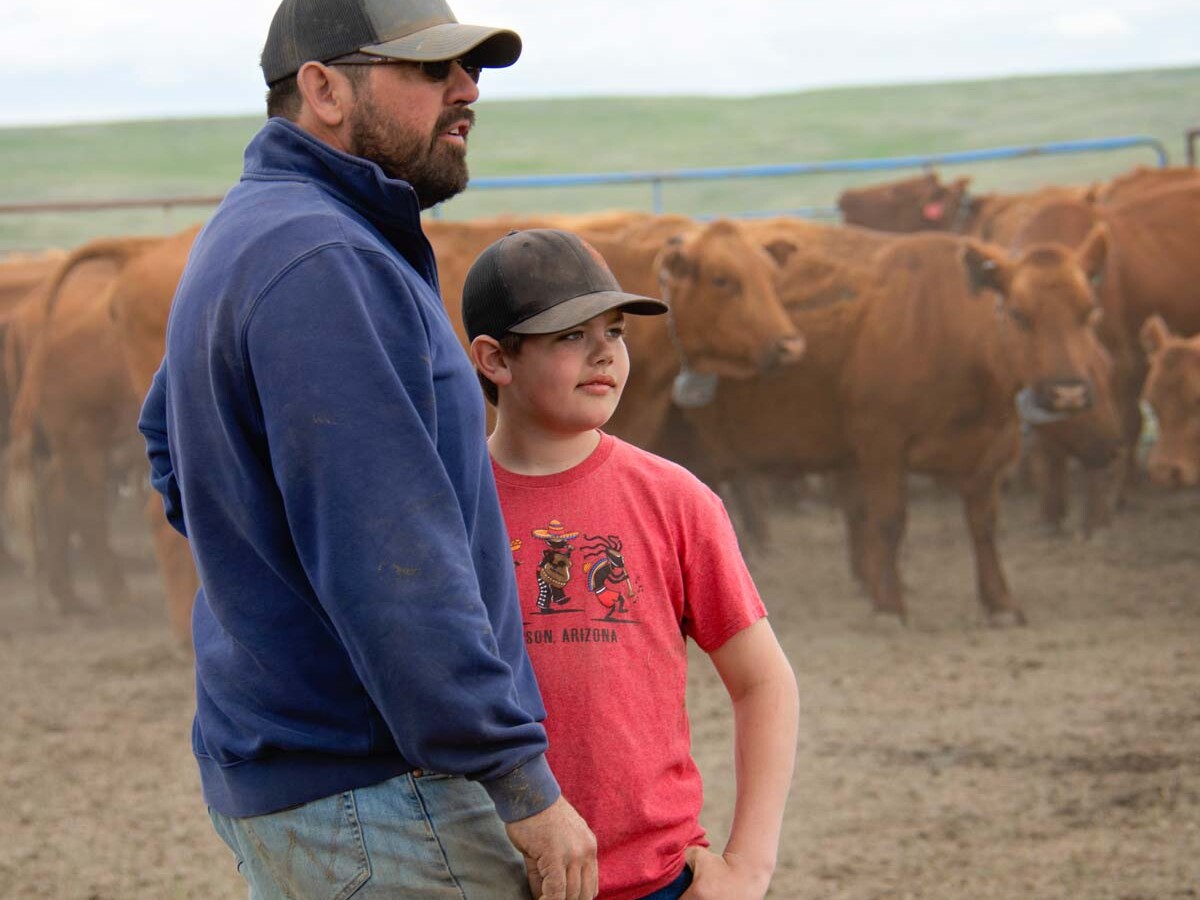
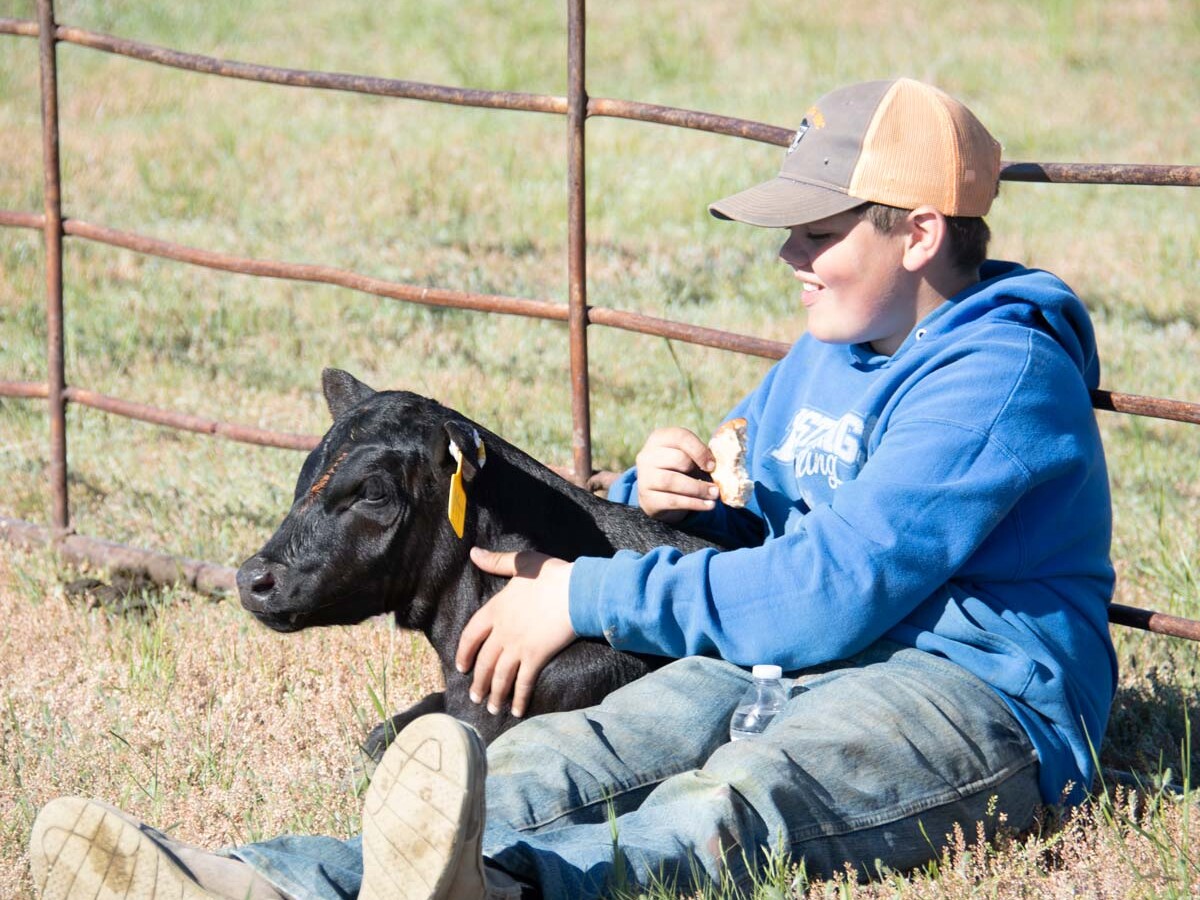
Nestled in the foothills of the Little Rocky Mountains, the Matador Ranch, managed by Caitlyn Kelly, is the oldest in north-central Montana. It covers 60,000 acres of native grasslands, home to abundant wildlife habitat and one of the planet’s most endangered biomes. The ranch aims to prevent land conversion and help ranchers maintain their herds.
The idea for the Matador originated after a severe drought in 2002, which led many regional ranchers to sell half their cattle. The Matador’s location in the mountains makes it more resilient to drought due to higher precipitation, as does low-density cattle grazing. The Matador is crucial for ranchers’ ability to adapt to climate challenges.
Bringing livestock here was transformative for the Merrimans. “When starting as a young producer, finding a place with good grass for leasing is challenging,” Merriman said.
Kelly agrees. “You need to make a profit to support your family, and affordable grazing helps. If a rancher adheres to everything, we offer discounts and can almost cut their grazing price in half.”
The grassbank fosters conservation and provides affordable grazing, helping early-career ranchers build capital. TNC’s model encourages ranchers to practice conservation on their home properties while receiving discounted lease prices at the Matador. One significant point is that ranchers were required to share pastures for their cattle, which led to more community building and sharing successful practices across the area—a cooperative nature that helps combat the sometimes-isolating nature of rural life. The ranch also supports mentorship and resource sharing, enhancing community ties and encouraging sustainable practices like rotational grazing to help sustain the rural way of life for current and future generations.
“The grassbank allows agricultural producers to build capital,” said Laura Nowlin, executive director of Winnet Aces, who is part of a joint effort to establish a new grass bank with TNC and Rancher Stewardship Alliance. “Local ranchers contribute more money to the local economy than any other industry, including recreation and tourism.”
Members also benefit from sharing equipment and exchanging knowledge with others. More established ranchers who have been in the business for decades sometimes lend out equipment to younger ranchers who cannot afford their own, creating a co-op feel within the community. Some ranchers excel at traditional cowboy skills like roping and riding, while others are skilled in corral work and low-stress livestock handling, allowing everyone to learn from one another.
“It’s part of the unwritten mentorship that happens,” said Kelly.
Merriman says that being a participating rancher on the Matador has helped expand their herd and save on grazing costs through conservation practices.
“We could not have bought our place without the Farm Service Agency down payment loan. And having the opportunity to run cows on the Matador has truly helped us stay on our land. They were lifelines. Without them, we would have never gotten started – or been able to keep going.”
Clifford Merriman
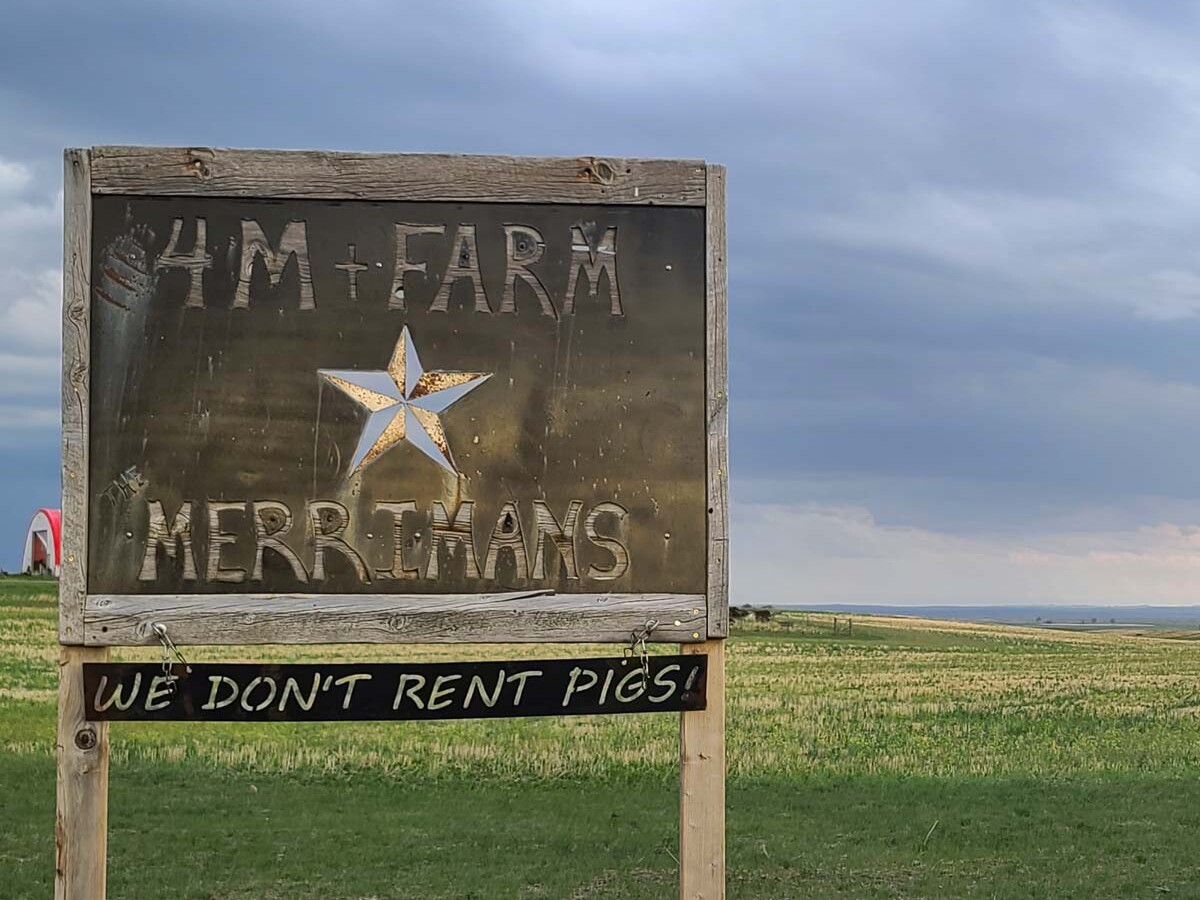
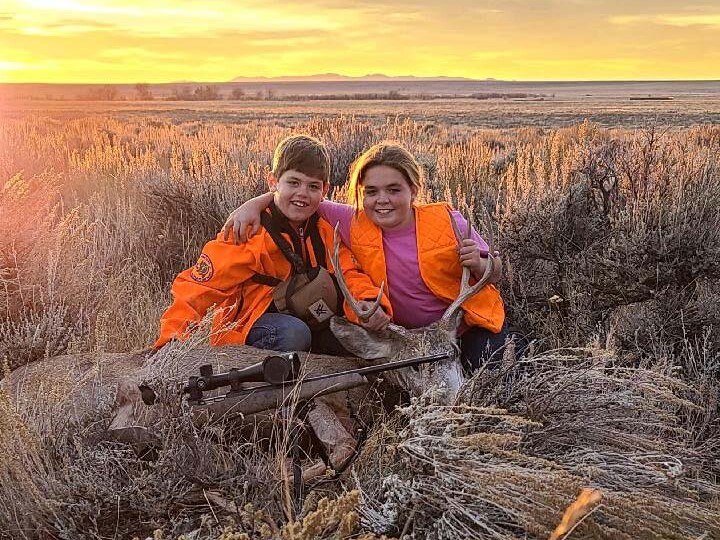
How The State Of Agriculture Is Changing
From 2017 to 2022, Montana’s ranches and farms decreased by 89%, mainly due to increasing land and equipment costs and urban development pressures. It now takes 400 cattle to feed a family of four profitably. With rising costs of calves, trucks, and diesel, ranchers are struggling to sustain their livelihoods.
Changing Demographics
- Two hundred years ago, during the American Revolution, 95 percent of the U.S. population either were farmers and ranchers or worked for them. Today, that number is less than 2 percent.
One hundred years ago, 97 percent of the population was rural; now, it is less than 1 percent. - According to the latest U.S. Department of Agriculture data, the average age of a U.S. farmer and rancher is 58 years old, with a trend toward an aging population, while the number farmers and ranchers between 35-64 is declining, based on the 2022 Census of Agriculture.
- Just 8 percent of the producers in Montana are under 35.
Disappearing Ranchland
- 1,500 acres of agricultural land are lost to development each month, highlighting the need for preservation.
- Ranches are a cornerstone of preserving intact prairie grassland in central and eastern Montana. Without ranching, native grasslands are vulnerable to habitat loss, reduced biodiversity, increased soil erosion, and nutrient loss, especially if the land is converted to farmland, leading to habitat loss, reduces biodiversity, increased soil erosion, and nutrient loss. It can also negatively affect water quality by increasing runoff. Once these areas are converted, re-establishing a native grassland ecosystem can be very challenging.
- From 1990 to 2020, Montana converted 1.3 million acres of undeveloped agricultural land into housing and urban sprawl.
Economic Impact
- Agriculture in Montana is a significant sector, generating $5.5 billion annually and supporting over 30,000 jobs.
- With around 27,000 farms and ranches on 58 million acres, the sector produces food for the state and global markets while providing crucial wildlife habitat.
Consolidation
- Industrial agriculture has transformed Montana’s farming and ranching communities, leading to land and resource consolidation that hampers small-scale farmers’ competitiveness.
- Small farms and ranches in Montana have disappeared by 10 percent over the last five years, but the average farm size is increasing from 2,150 acres to 2,375 acres.
- As a result, fewer family ranchers remain, making recruitment challenging.
Solutions
- Since the Farm Bill’s inception from 2014 to 2020, about 92 Agricultural Land program conservation easements have been implemented statewide, injecting $109 million into farm and ranch operations.
- Of this, $47.1 million has improved the financial health of these operations, facilitating land purchases; landowners used $43 million to reduce debt, promote expansion, and plan for family succession; and $14.4 million went toward equipment and supplies.
- This $109 million investment resulted in $182 million in economic relief, supporting 1,057 jobs and generating $41.5 million in rural labor income.
Becoming Part of Matador Ranch
To graze cattle at the Matador and earn conservation credits (a discount on grazing), ranchers must avoid sod-busting, or converting native rangeland into cropland, and develop a range management plan with TNC on their home property. Discounts are available for dedicating land to prairie dogs, sage grouse leks (bird surveys are conducted both at the Matador and participating ranches), and reseeding overgrazed areas. These discounts reduce the fair market value, benefiting about thirteen ranchers.
As ranchers follow conservation guidelines on their properties, they extend the conservation footprint of the Matador beyond its 60,000 acres to include these other ranches, totaling 300,000 acres of conserving habitat and wildlife biodiversity. Half of the ranches currently participating at the Matador hold conservation easements on their own properties, and many already collaborate with the US Fish and Wildlife Service on sage grouse issues. Original grassbank ranchers advocated allocating some Animal Units per Month (AUMs) – a unit of measurement used to quantify the amount of forage required by grazing animals for one month – to young, beginning ranchers.
How Montanans Use Habitat Dollars to Protect Working Lands
Years ago, Montanans intentionally set aside funds in Habitat Montana to protect working lands and wildlife. Today, that fund has never more crucial.
Where the southern foothills of the Rocky Mountain Front and the north end of the Little Belts come together, there’s a piece of land where the mountains meet the prairie. Among the rolling seas of native grassland are unique geological features: volcanic dikes, terminal moraines and two prominent volcanic buttes called Birdtail and Lionhead. The far end of this landscape is timbered with big, deep draws, and myriad springs pump fresh water out of the ground even in drought years. This is cattle land, part of rancher Bob Rumney’s two properties that make up the Rumney Cattle Company near the town of Cascade. But it’s also land abundant with wildlife: 600-800 elk winter here, a bevy of mule deer, bighorn sheep, bears, coyotes, sharp-tailed grouse, partridges, eagles, and falcons, among many other creatures.
“It’s a really amazing piece of ground,” said Rumney. Bob’s father bought the home ranch in 1963. At 67, Bob has passed the ranch on to his son, John, although he’s still involved in the operation. “I could never sell this place. This is magical.”
In 2018, Rumney worked with Montana Fish, Wildlife and Parks (FWP) to voluntarily protect 3,980 acres of critical wildlife habitat through FWP purchasing a conservation easement to place on part of the ranch. This fifty-year-old tool respects landowners’ private property rights and protects working land and wildlife habitat in perpetuity.
“The whole purpose of the easement was to allow us to buy the land at half the appraised value and not pay taxes on it,” said Rumney. “It’s a wonderful tool to increase our capacity for running cows.” John, who also lives and works on the ranch, echoed this sentiment. “We viewed easement as a tool to expand our operation without taking on massive debt.”
As part of their easement, the Rumney family welcomes the public to enjoy its treasures, continuing the family’s tradition of allowing access for bird watchers, hikers, and hunters. “My dad has always been huge on letting people use our land for hunting and hiking,” said John. “He’s always said it’s the luck of the draw that we have it. If the roles were reversed, he’d appreciate somebody allowing him access.”
The easement and the abundance of wildlife on this “amazing” piece of land are dovetailing successes of Montana’s most effective conservation program: the Habitat Montana Fund. It’s primarily thanks to this program’s historic legacy and its modern functioning that the State of Montana has played such a critical role in helping private landowners protect working land and habitat.
Habitat Montana funding allows FWP to purchase conservation easements, usually on private land, and only after the landowner volunteers to initiate them to conserve the state’s most critical and threatened wildlife habitat. While the sale of nonresident hunting licenses has primarily funded Habitat Montana, Montanans recently agreed to diversify Habitat’s funding with revenue from marijuana sales taxes. This decision reflects a more collective responsibility and shared commitment to preserve the state’s natural resources.
With land values soaring, populations surging, development booming, and an unprecedented demand from landowners for voluntary private land protection, Habitat Montana has perhaps never been a more crucial tool in preserving Montana values and ways of life and allowing public access.
“My dad has always been huge on letting people use our land for hunting and hiking. He’s always said it’s the luck of the draw that we have it. If the roles were reversed, he’d appreciate somebody allowing him access.”
John Rumney, Rumney Cattle Company
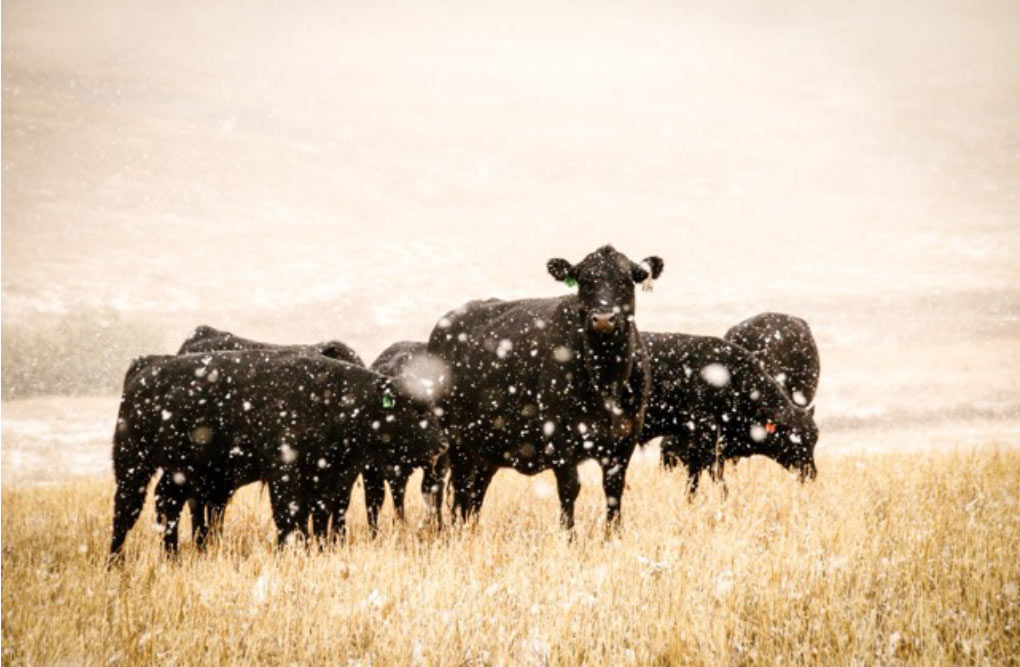
Habitat Montana’s Origin Story
Looking at a thriving wildlife landscape like that on the Rumney Cattle Co. property, it’s easy to think Montana’s wildlife populations have always thrived. Many people believe that because of the state’s remote nature, Montana was somehow forgotten in the commercial hunting and trapping frenzy that nearly wiped out every big game species—ungulates and predators—as the West was settled. That couldn’t be further from the truth. And while most people know about the demise of buffalo, grizzlies, and wolves, far fewer know there was also a time when there were very few big game, fish, upland birds and waterfowl, even in Montana.
“Our conservation history goes back to our territorial establishment in 1864 when the first territorial legislature had passed the first conservation law that settlers could no longer fish with dynamite but had to use hook, line and pole to save the fisheries from being wiped out,” said Mike Korn, a former landowner-sportsman relations coordinator for FWP.
To illustrate this point further, in 1905, a Bozeman man named Elers Koch, one of Montana’s first Forest Service Rangers, was assigned to the stretch of land that’s now the Bob Marshall Wilderness. He walked for 30 days across the Bob, into Glacier, and to the North Fork of the Flathead River. Throughout the entire journey, he only saw two living animals— a grouse and a mountain goat.
In response to the disappearance of wildlife and preserving natural wonders, Montanans convinced President Grant to set aside Yellowstone and President Teddy Roosevelt to set aside the National Bison Range. Roosevelt also successfully designated millions of acres in the state as national forests. President Taft set aside Glacier.
This coincided nicely with the passing of the Pittman-Robertson Wildlife Restoration Act in 1937, a nationwide act to fund wildlife restoration, habitat improvement, and land acquisition through an excise tax on firearms, ammunition and archery equipment. The U.S. Fish and Wildlife Service administers the revenue from these sales and distributes it to each state’s wildlife management agency.
Then, in 1972, Montanans wrote our state constitution to uniquely include the right to a clean and healthy environment. In 1975, the Montana Open Space and Voluntary Conservation Easement Act became law, the principal tool for private land conservation. This opened the door to voluntary, permanent private land protection.
Habitat Montana is just one in a long line of specific and concerted efforts to restore Montana’s wildlife abundance.
Chris Marchion, former president and current board member of the Montana Wildlife Federation and founder of the Anaconda’s Sportsman Club, traces Habitat’s inception to 1981 when President Reagan froze government spending on the Land and Water Conservation Funding (LWCF). The fund was intended to set aside $900 million annually to protect vital wildlife habitats and provide public access. (The Sun River Wildlife Management Area is an example of an LWCF-funded site in Montana.)
Even in the 1980s, there was growing pressure on real estate for higher economic use than agriculture. At about the same time, family farms were reaching the end of one generation and starting to transition to another. However, a willing member of the next ranching or farming generation didn’t always have the financial means to make a go of it as massive agriculture companies were consolidating large family properties.
Amid this situation, which coincided with Reagan cutting federal spending, Montanans rallied together. They began discussing options for setting aside consistent funding for the state wildlife agency to acquire, purchase, and conserve habitat with high wildlife values that often adjoin public lands to help preserve our unique wildlife populations. The idea was intentionally protecting land through conservation easements, inspired by what was happening nationally being led by organizations like The Nature Conservancy and the Trust for Public Land.
Both hunting and conservation groups called on the legislature to create a funding source for FWP to protect critical wildlife habitats. In 1987, legislation passed that founded Habitat Montana, funded with $3 million annually in out-of-state hunting licenses and the excise tax from ammunition, firearms, and sporting equipment. The legislation directed FWP to spend the funding primarily on conservation easements. Habitat Montana was a mechanism, a stable funding vehicle, to pay for conservation efforts that people recognized needed to occur.
Conservation efforts in Montana have long been an incredible story. It’s rare that the exploiter of a resource—hunters, in this case—not only stopped short of destroying that resource—wildlife—but volunteered to save it. The hunting community proposed that taxes from ammunition and hunting licenses go to recovering decreasing wildlife numbers. Over a half-century later, wildlife populations are increasing, users are paying for it, and everybody benefits.
“Montana has one of the highest participation rates in hunting and fishing in the nation,” said Bob Sanders, Ducks Unlimited manager of conservation programs in Montana. “The access to good wildlife habitat is one of the reasons why many people, including myself, live here. Habitat Montana is one of the best things about Montana. No other easement programs provide for public access in the state.”
Habitat Montana allows private landowners to keep their properties in the family by using conservation easements to help keep their farms afloat. These landowners continue to be valued as agricultural producers in the American economy while simultaneously providing habitat for wild things that people hunt and fish. The people paying for it are those who like to hunt and fish.
“Voluntary rancher-friendly conservation programs, like conservation easements, keep good grassland on the landscape, keep habitat from not being fragmented and create an optimal equation not only for waterfowl but also for upland birds and big game species, including some of the best pronghorn migration corridors,” said Adam McDaniel, Ducks Unlimited biologist. “These easements create a partnership with the federal, state, and other NGOs and private landowners. That equation allows for good, intact prairie grasslands combined with a mosaic of BLM and state land.”
“Montana has one of the highest participation rates in hunting and fishing in the nation. The access to good wildlife habitat is one of the reasons why many people, including myself, live here. Habitat Montana is one of the best things about Montana. No other easement programs provide for public access in the state.”
Bob Sanders, Ducks Unlimited
Diversifying Funding with Marijuana Revenue
According to an economic study in 2019, it became clear that more funding was needed for Habitat Montana. Paying for the resource needs for working lands, wildlife conservation, and recreation had exceeded budget allocations, including federal allocations, which also play a crucial role in protecting and maintaining the state’s lands. That year, Montana landowners and nonprofit land trusts had filed $33.6 million in proposals for federal and state conservation funding programs—but only $21.2 million were approved, leaving a $12.4 million funding gap. Existing state funding wasn’t keeping pace with the growing demands for public access, protecting working farms and ranches, and managing Montana’s fish and wildlife populations.
Again, Montanans began to rally around conservation efforts and funding. The model of hunters and anglers predominantly funding wildlife conservation, easements, and wildlife agencies was “a fantastic model that could be broadened to include other recreational users and take the burden off hunters and anglers,” said Dave Chadwick, former president of Montana Wildlife Federation.
Around the same time, a ballot initiative to legalize marijuana was gaining momentum. Pepper Petersen, President and CEO of the Montana Cannabis Guild, was one of the primary drivers behind it. He knew if legalization were to pass, it could benefit what Montanans value: public lands and hunting and fishing access. Thus, the initiative language stated that a portion of the sales tax from marijuana be added and diversified revenue for Habitat Montana. Voters overwhelmingly approved the initiative. Marchion says he knows people who opposed marijuana legalization but supported the initiative to boost the Habitat fund to address rising development concerns, shrinking open lands, and habitat loss.
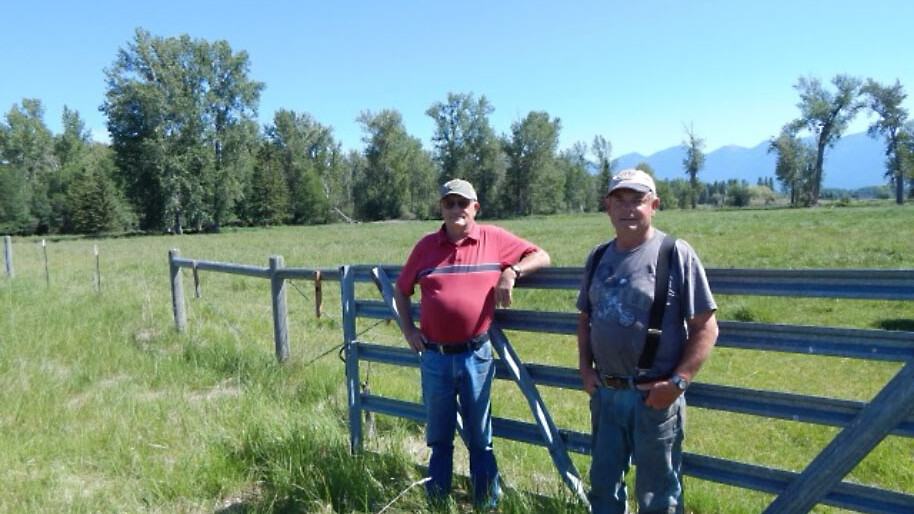
Protecting Private Land with Habitat Montana Funds
Over half of Montana comprises private working lands, including farms, ranches, and forests. These lands contain prime agricultural soil and are often wildlife corridors connecting habitats. However, threats to working lands from development pressure, skyrocketing land prices, and agriculture challenges have made it difficult to keep them in family hands. That’s where Habitat Montana and other essential funding sources play such an important role.
“One of the cultural notions that we have here in Montana is landowners being stewards of the land,” said Korn. “Habitat Montana provides a way to incentivize landowners to be able to look at their land from a conservation point of view.”
Conservation Easements
As of June 2022, Habitat Montana funds have enabled FWP to protect 70 properties totaling nearly 340,000 acres from development through conservation easements, using $51.9 million of the funds. At the same time that it provides a critical range for wildlife, Habitat Montana benefits ranchers and farmers by providing working capital to secure financial futures, pay off debt, or expand operations.
Bruce Louden, whose farm east of Kalispell has been in that family since 1918, decided to utilize multiple conservation easements over several years on many of the family’s parcels to head off the growth they saw coming in Flathead Valley.
“In 2009, it wasn’t quite as bad as it is now as far as people moving in, but we could see how the trend is going as far as population, housing, and development,” said Louden. “We just didn’t want that to happen to our farms, and it was somewhat of a financial incentive that helped the land stay in farming.”
Conservation Leases
In 2022, FWP introduced a conservation lease, a new habitat protection tool. A lease is a voluntary, incentive-based agreement between FWP and a landowner committed to specific land management practices that protect wildlife habitat. FWP pays the landowner a one-time per-acre fee for the lease agreement, which, in contrast to a permanent easement, lasts only 30-40 years.
FWP Wildlife Division Administrator Ken McDonald recently told the Montana Free Press that the agency launched leases to give private landowners more options to protect sagebrush grasslands, prairies, and wetlands. “Working with landowners is ultimately what we’re seeking to achieve, and this lease program is just another tool to help with that,” he said. “We’re pretty excited about the projects that will hopefully get approved.”
FWP has already used the Habitat Montana program to enroll eleven properties in eastern Montana in the new habitat lease program. The agency aims to enroll 500,000 acres of prairie habitat under 30-40-year leases by 2027.
Darwin Pfaffinger’s ranch—a 1600-acre ranch north of the Yellowstone River in eastern Montana near Hysham that’s been in his wife’s family since 1904—includes one of those leases. They hesitated to place the land in a conservation easement because Pfaffinger says he can’t predict the future: whether or not his kids will face financial hardships and need to sell part or all of the land to make ends meet.
“I don’t feel at my age that I’m in a position to tell my kids what to do with the ranch when they inherit it,” said Pfaffinger. “What if something comes up and it has to be sold? We don’t want it tied into some legal nightmare, which could cause them a lot of trouble.”
“One of the cultural notions that we have here in Montana is landowners being stewards of the land. Habitat Montana provides a way to incentivize landowners to be able to look at their land from a conservation point of view.”
Mike Korn, Retired FWP

Easement or Lease?
Conservation easements permanently protect the natural characteristics of open space, wildlife habitat, and working lands, while conservation leases only maintain those characteristics for a few decades. Many Montanans, from landowners to hunters to veterans in the private lands protection space, are nervous about seeing public funding used for temporary protections rather than permanent ones.
“We’ve been working with conservation easements for almost five decades, and they are the best tool we have for certain landowners to meet their goals—whether that’s generational transfer, an influx of cash to improve operations, or just to permanently protect the land they cherish from being converted to a subdivision,” said Chris Bryant, conservation director at The Nature Conservancy. “These easements provide a sense of reassurance and optimism for the future of our natural resources and agricultural and timber economies. In comparison, leases are a form of conservation offering a smaller protection level. Conservation easements are not entered into lightly and often take years if not decades to develop and implement—yet we still have more landowner demand than capacity to get them done.”
Chris Marchion is very vocal about not supporting leases. Montana hunters created Habitat Montana to address wildlife habitat needs, he says. He believes the program has succeeded for over thirty years because of the collaborative management of FWP and conservation-minded hunters and landowners to acquire fee titles for permanent easements. “Temporary leases are not always the priority of hunters who provide the funds,” said Marchion.
Whatever tool landowners choose to protect their lands voluntarily, one thing is for sure, private land protection and working lands will continue to rely on the Habitat Montana Program and the public funding it provides.
This community of conservationists, private landowners, and government partners has written the incredible recovery story we live in today. It’s not a story of winners and losers. With Habitat Montana, everyone wins.
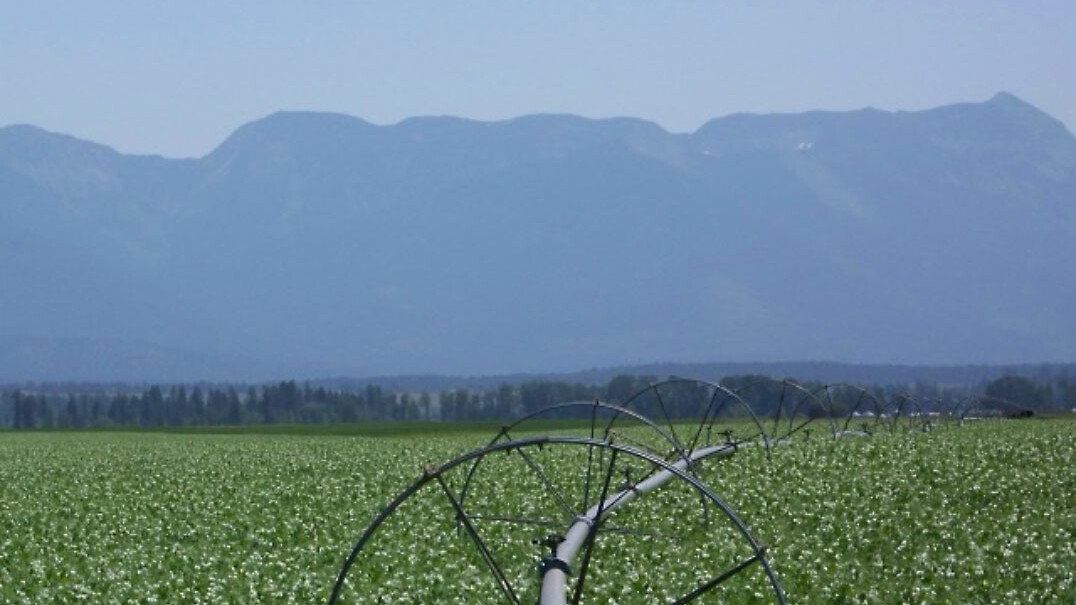
The Montana Great Outdoors Project: One of the State’s Most Successful Landscape Protection Stories in the Making
How a land trust, a timber company, and a wildlife agency teamed up to save working and hunting lands for the entire northwest community.
Jim Williams raised his two kids hunting deer and elk from a swath of open landscapes in northwest Montana, a patchwork of timberland surrounding the Thompson Chain of Lakes between Kalispell and Libby. Each autumn, Williams, who calls Whitefish home and has lived in Montana for nearly 40 years, drives with his kids or other hunting partners for over an hour to a gated trailhead at the drainage of his choice. It’s been informal access here for decades, usually a handshake agreement between landowners and people like Williams. From wherever he parks his old truck, he hikes several miles to look for wildlife, hoping to put food in the freezer. More often than not, he doesn’t shoot any game. But he always enjoys the mountain views, sunshine, and fresh air. There’s a reason he loves this place: west of Glacier National Park and east of the Cabinet-Yaak Wilderness. It’s a unique and biodiverse region, home to some of the state’s best wildlife habitat and landscape connectivity: prime hunting grounds.
“We’re so fortunate in Montana to have almost all of our native ungulate species still here and in huntable numbers,” said Williams.
He would know, although he’s a former longtime wildlife biologist and regional director of Montana Fish, Wildlife and Parks.
But there’s nothing to keep this long-cherished public access that Williams and the scores of other people who hunt this land have enjoyed openly. This region is under immediate and unprecedented threat. The timber industry that primarily owns these lands is facing challenging economic times. Machines allow a single operator to cut down a tree, limb the branches, and load it all in a truck in one swift move—a process that previously required a handful or more workers. Then, the COVID-19 pandemic hit the industry even harder. Even as the cost of lumber soared, employees in paper mills were reduced by 15,000 people and in logging by 7,900. Since the 1980s, Montana’s timber harvest and log supply has dropped to just one-third of what it was.
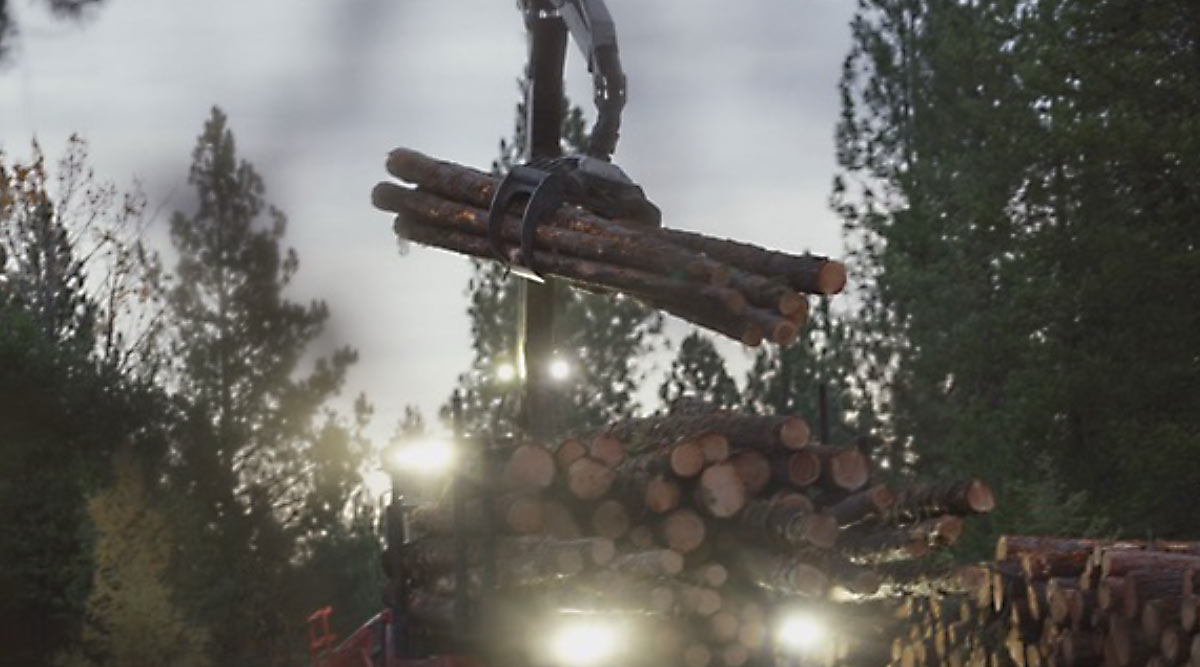
In addition, like much of Montana, the rise of remote work and the pandemic migration brought a significant influx of people to Flathead County. Since the spring of 2020, nearly 10,000 people have moved to the Flathead; Montana has added almost 50,000 people, a massive jump for a state that only recently numbered under one million. As a result, real estate prices have increased rapidly as demand has increased. Undeveloped lands – including working timber lands – have made way for subdivisions in what feels like a constant churn of new land ownership. It’s a perfect storm of conditions poised to irrevocably wipe out these working lands and the recreational uses around the Thompson Chain of Lakes that people here have enjoyed for generations.
“The pressure to develop and subdivide working lands and wildlife habitats has skyrocketed,” said Williams. “If these areas are lost to residential subdivisions, it will not only fragment the land but erode the access we all enjoy, which is a cornerstone of the Montana way of life.”
The threat has spurred what’s likely to go down as one of modern Montana’s greatest conservation success stories—and spurred a remarkable partnership to save this landscape and the Montana values it nourishes. Trust for Public Land (TPL), a land trust that strives for equal access for all people to enjoy public lands, Green Diamond Resource Company, the largest timberland owner in Montana, and Montana Fish, Wildlife and Parks (FWP) have been working toward protecting this landscape under conservation easement since Green Diamond took ownership. Called the Montana Great Outdoors Easement and spanning 86,000 acres across Flathead, Lincoln, and Sanders counties, it would ensure sustainable timber management, protect forestry and wood-product jobs, protect wildlife habitat and landscape connectivity, and continue providing public recreation access. It’s a crucial space for protecting wildlife migration; the easement abuts some of the wealthiest wildlife habitats in the northwest, including Thompson Chain of Lakes State Park, the 142,000-acre Thompson-Fisher Conservation Easement, and the 100,000-acre U.S. Fish and Wildlife Service’s Lost Trail Conservation Area, as well as Kootenai National Forest and Montana Department of Natural Resources and Conservation lands. It would protect around 300,000 acres, although not all of them will be contiguous.
On August 23, 2024, the state’s Fish & Wildlife Commission unanimously approved Phase 1 of the Montana Great Outdoors Conservation Easement. According to Bill Schenk, Montana FWP’s Land and Water Program manager, FWP broke up the easement into two phases because of the uncertainty of funding limitations and considering existing conservation easements in the area.
Some might call a partnership between a land trust and a timber company unlikely. But in Montana, protecting working landscapes that provide hunting opportunities and jobs that reflect local values is a classic conservation definition.
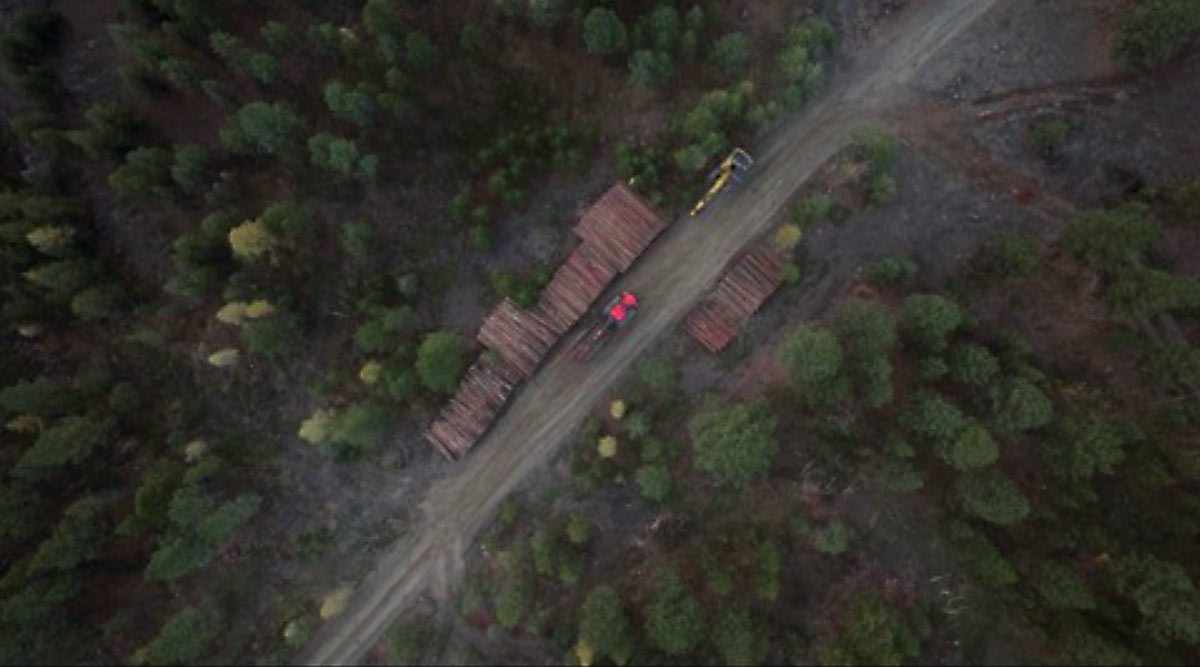
“It’s just great to have a committed landowner committed to sustainable forestry management for the long haul and interested in keeping public recreation access opportunities alive on their lands.”
Dick Dolan, Northern Rockies Director of Trust for Public Land
The Beginnings of Voluntary Protection
When Southern Pine acquired the land, it began exploring conservation options, including developing a relationship with TPL. In purchasing the land from Southern Pine, Green Diamond inherited specific ongoing conservation projects and existing relationships, including those with TPL. At the time, Green Diamond assured the public that it would continue managing the working timberlands and ensure public access as part of their long-term plans for a conservation easement – which has become the Montana Great Outdoors Easement.
“This project is not the first of its kind but is refreshing in the sense that we have been partnering with logging companies for 25 years in northwestern Montana,” said Dick Dolan, Northern Rockies Director of Trust for Public Land. He points to the Montana Great Outdoors Easement as part of a much larger effort by TPL to protect one million acres of working lands across Montana before they’re sold off to the highest bidder for development or land costs become too extravagant to prohibit conservation purchases.
“It’s just great to have a committed landowner committed to sustainable forestry management for the long haul and interested in keeping public recreation access opportunities alive on their lands.”
Green Diamond is a sixth-generation, family-owned company that has operated for 134 years. It owns 1.6 million acres of forestland in four western states, including 291,000 acres in northwestern Montana. Green Diamond intends to maintain nearly all those Montana acres under the Montana Great Outdoors Easement. “We aim to support working timberlands by discouraging fragmentation, poorly planned development, rural sprawl and increased Wildland Urban Interface areas,” wrote Jason Callahan, policy and communications manager for Green Diamond Resources, in an email. “We support rural economies by securing resource lands for long-term resource production and provide an alternative for landowners to continue managing their lands as working forests rather than selling them off for their highest bid use, which is often development.”
Callahan continued that Green Diamond and TPL see eye to eye on shared values, like the value of conserving working forests and the renewable resources they can provide and the benefits to the public of having open space and maintaining a working land base to support rural natural resource economies.
“These habitats that TPL is working on are corporately owned timberlands, which are critical to keeping working lands that still contribute to the counties and provide jobs,” said Williams.
In the summer of northwestern Montana, Williams says, people hike and climb mountains, float rivers and lakes, and gather huckleberries; as the nights wax longer and the morning temperatures become chillier, it reminds people to collect firewood before hunting season. It is all part of the natural transition: huckleberries to firewood to hunting, “an annual cycle of mountain life here,” said Williams. “It connects us in today’s modern hustle and bustle world to the ancient dance of hunting and gathering that purchasing food in the grocery store can’t provide. The ability to legally hunt deer and elk is a privilege. We must step up to maintain that opportunity by getting involved in projects like the Montana Great Outdoors to keep these lands open for wildlife and the public.”
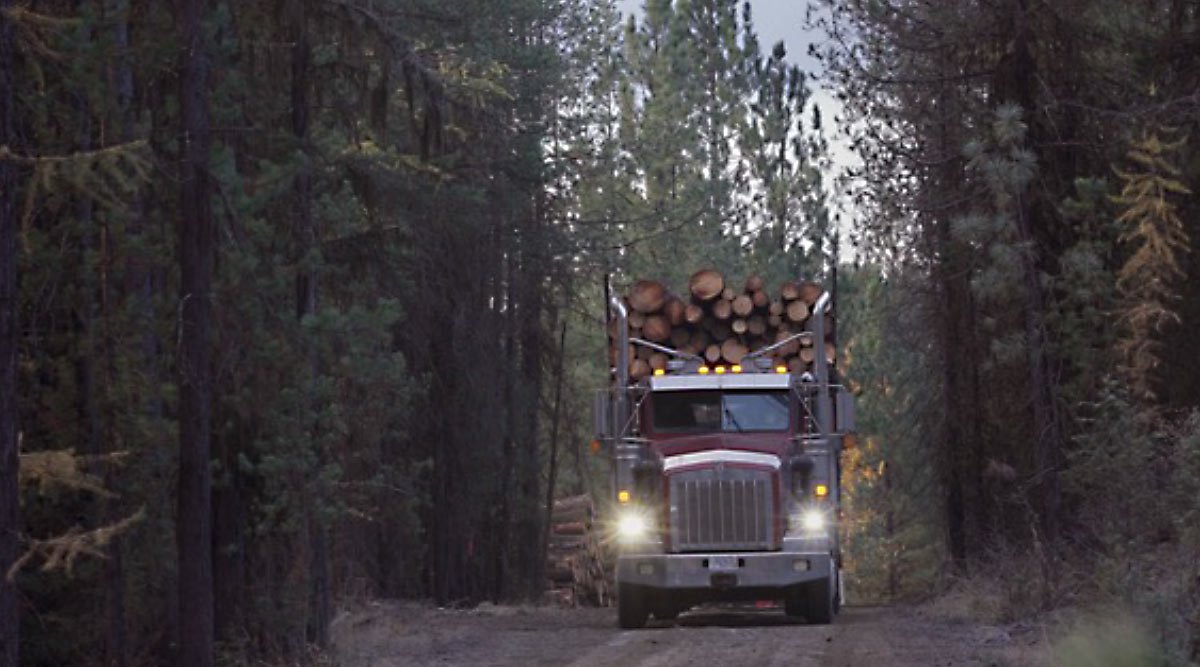
More and more people are moving to Montana because of the quality of life. People want public lands to recreate in. They want to raise their kids close to nature and take them fishing, hunting, hiking, and berry picking. For many, Montana is the “Treasure State” in the sense of cherishing its public lands and open space. This conservation success story is one of several that helps lower the anxiety of the state’s citizens worried about unchecked development.
These are the same reasons Williams chose to live, work, and raise his kids here. His daughter even became a junior hunter education instructor when she was younger. His kids sometimes tag along to go hunting but are now adulting in that busy stage in life. His children are grown and live independently but continue to eat wild game.
The Funds That Made It Possible
This project wouldn’t be possible without a mix of public and private funding, including the U.S. Forest Service, which pledged $20 million through its Forest Legacy Program. Other entities have stepped up, including TPL, which raised almost $4.2 million in private charity and Green Diamond has voluntarily donated the remaining balance of $13.9 million.
The State of Montana also plans to contribute $1.5 million through its Habitat Montana program, a state-administered fund to conserve Montana’s most critical and threatened wildlife habitat. With the help of the U.S. Forest Service Forest Legacy Program, the State has expanded its scope of habitat conservation to include high-priority forests that are threatened to be developed and lost forever—like the Montana Great Outdoors Easement.
The money is all in place to cover the cost of the $39.5 million easement sale, but one obstacle has arisen. WRH Nevada Properties, supported by the Gallatin Gateway-based Citizens for Balanced Use, filed a last-minute lawsuit on August 7 to halt the easement, claiming it might impact the future development of their subsurface mineral rights.
However, on October 8th, a Lincoln County District Court judge dismissed their argument, ruling that “it is unreasonable to interpret the plain language of the Proposed Easement as interfering with WRH Nevada’s mineral rights.” WRH Nevada Properties has already appealed this ruling to the Montana Supreme Court.
On October 21, the Montana Great Outdoors Easement went before the Land Board, which comprises the governor, attorney general, secretary of state, superintendent of public instruction, and state auditor, and makes decisions about what happens to state lands, including easements. The Land Board approved the purchase with a vote of three to two, with the condition that new language be crafted in the easement to clarify further that there will be no impacts on WRH’s mineral rights. Montana Fish Wildlife and Parks and other partners have said it will be a “top priority” to craft language that will satisfy the Land Board. It’s expected the Land Board will provide final authorization before the end of 2024.
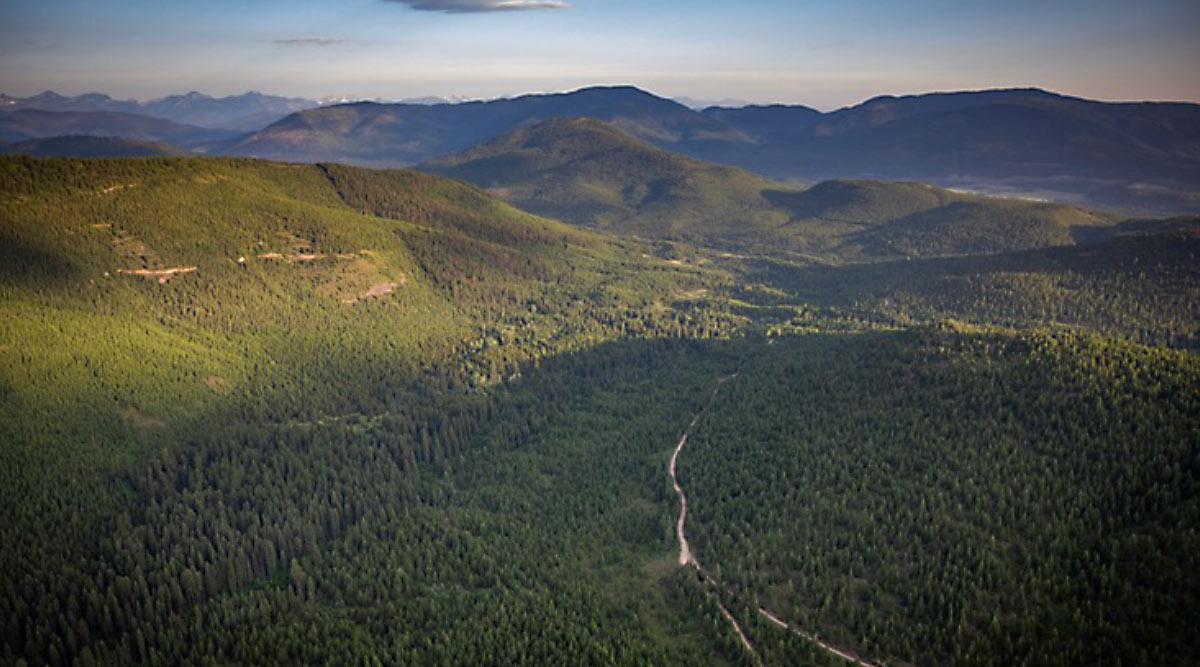
Williams worked for the state wildlife agency for over thirty years. He cannot recall how often somebody told him they lived and worked here to raise their children in a healthy environment and for Montana’s hunting and fishing opportunities, regardless of personal politics. Some people even told him they work all year for the five-week hunting season in the fall. “It was their scenery tax to make lower wages and endure long winters for the opportunity to legally pursue deer, elk and antelope in the fall.”
Williams and others in the community surrounding the easement are paying close attention to the outcome of the Montana Great Outdoors Project. This land is the community’s supermarket, playground, garden, gym, orchard and church. People all need a place like this that is wild and a place to unwind from the toils of this world. “It’s such a unique project that highlights Montanan’s ability to collectively shelve their political beliefs and ideology and come together to fund and deliver permanent conservation,” said Williams.
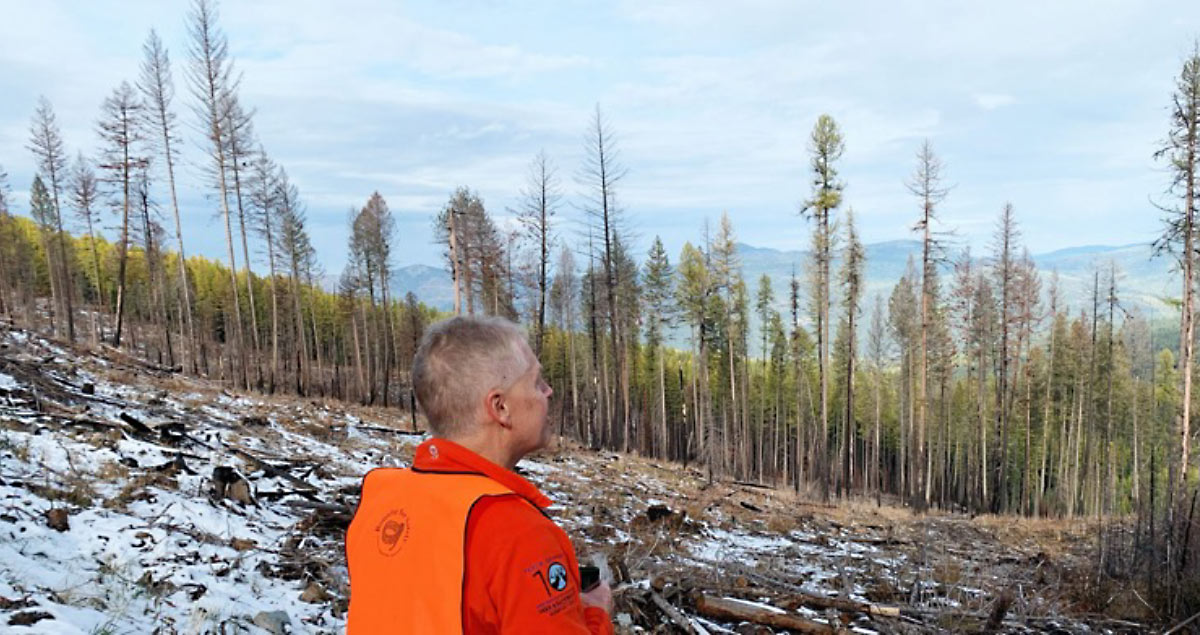
The Growing Demand to Safeguard Montana’s Lands and Livelihoods
As the state grows and transforms at an unprecedented pace, threatening values and ways of life, landowners increasingly turn to private land protections to preserve open and working landscapes.
On a windswept grassland, intermixed with sagebrush and edged by creeks, sits the Mannix Ranch in west-central Montana. Hundreds of black cows dot the landscape in different herds throughout the 58,000 acres of working lands the Mannixes manage, of which one-third is leased from other private landowners and another third is leased off of public land. The ranch is cupped in the Blackfoot Valley by foothills and hemmed in by the rounded Garnett Range, with the Scapegoat Wilderness towering to the north. Much of the land still looks like it did when the Mannix forebears built the original homestead here 142 years ago.
That’s no accident, according to Logan Mannix.
Mannix left the ranch for eight years to teach high school science in Helena but returned in 2016. Now in his late thirties with three kids of his own, he recalls that a land ethic to leave the land better than you found it was embedded in him at a young age. “The land that we manage, whether owned or leased, supports many different values, including ones that we may not share: value for grazing animals, habitat for wildlife, viewscapes for people passing by, water quality for fisheries or groundwater and other resources,” he said.
Like many Montanans, Logan has experienced significant change since his return to the ranch, a change that directly affects his way of life.
“I started to wonder if this valley was the one that wouldn’t be subdivided, but the pandemic proved that wrong,” he said. “Ranches on three sides sold in one year. Fortunately, one is still held together, and we’re getting to lease it. However, the two ranches on the other side of us sold and were immediately subdivided to the smallest possible acreage allowed by county zoning.”
This encroaching development on working lands isn’t an isolated phenomenon in the Blackfoot Valley. Montana is undergoing a transformation, a growth surge, at a pace unprecedented in our lifetimes. The pandemic-induced migration, the rise of remote work, a tech boom, and other factors have contributed to a significant population increase. Home and land prices have skyrocketed, leading to heavy development pressure. As a result, we are witnessing rapid rural change threatening Montana’s values and ways of life. This situation has created an extraordinary urgency to conserve private working lands, open spaces, and public access for hunting, fishing, and other recreation—before they are lost forever. Thus, landowners like the Mannix family are turning in unusual droves to voluntary private land protections: mechanisms to keep their ranches intact as working lands, provide wildlife habitat, and keep their lands in the family.
“I hope this landscape remains largely intact when our kids and grandkids inherit this valley,” said Mannix. “It would be a neat legacy for our ranch to be a part of that. But protecting that will take more than just our ranch; hopefully, we’re one of many.”
Logan Mannix, Mannix Ranch
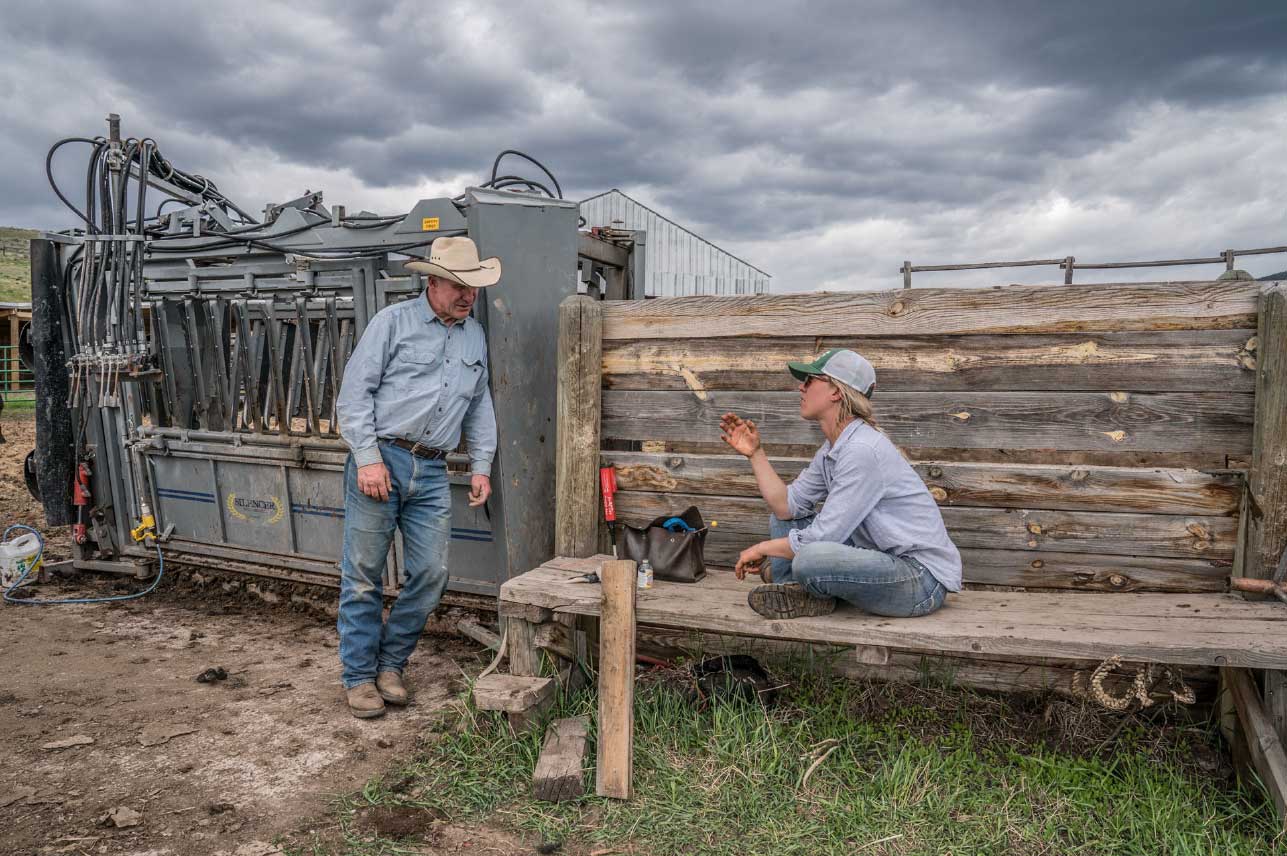
Montana’s Changing Landscape
Since 2020, Montana’s population has grown 4.8 percent, making it the fourth fastest-growing state, adding nearly 50,000 people. Most in-migration has occurred in the state’s western portion, in cities like Bozeman, Kalispell, and Missoula. But now, we’re seeing growth spilling over into smaller counties that neighbor the most prominent cities. Musselshell County, between Helena and Billings, has grown 31 percent. Broadwater County, between Helena and Bozeman, has grown by 14.9 percent. Three counties north and west of Kalispell have seen steady growth, including Mineral County, which has grown 13.6 percent; Lincoln County, which has grown 11.5 percent; and Sanders, which has grown 10.8 percent.
While Montana’s landscapes are a magnet for many, this growing popularity substantially threatens our open lands. Some parts of Montana’s landscape appear as they did hundreds of years ago when Lewis and Clark passed through because farmers and ranchers have permanently protected their land using conservation easements. However, the increasing population and growth remains a serious cause for concern among Montanans.
Earlier this year, 90 percent of registered Montana respondents described development and sprawl into open lands as a severe problem. Gavin Ricklefs, Managing Director for the Heart of the Rockies Initiative, points to a recent economic study to illustrate the growing concern: Since 1990, over 1.3 million acres of undeveloped land across Montana, primarily agricultural land, has been converted to residential subdivisions. Nearly half of the homes constructed have been on lots that average ten acres. One-quarter of all homes in Montana have been built just since 2000. Every month, Montana loses 1,500 acres of open land to development—even as Montana’s agriculture brings in $5.5 billion annually and is responsible for 30,000 jobs on 58 million acres of land that produce food to feed the state, the nation, and the world.
Beyond the acres lost, fragmenting working lands can have outsized impacts on farmers and ranchers. Landowners on neighboring working lands often enjoy a culture of helping each other, as during calving or haying. However, once neighboring lands are subdivided, conflicts can arise between residential neighbors and farms and ranches. For example, newcomers to Montana may not be familiar with what it’s like living next to working lands with tractor lights on late at night.
“There are some real pressures that come with conversion and adjacent non-agriculture landowners,” said Ricklefs.
Finding a Solution
The Mannix family faced many of the same challenges and struggles to keep afloat that other ranchers have, even before the pandemic hit. These included soaring land prices, rising machinery costs, decreasing agricultural production, and some kids heading to urban centers. However, some Mannix family members, like Logan, saw the value in returning to the ranch and connecting to the landscape of their youth. The problem was affording to keep the land as its value soared.
“It’s truer than ever now, but for a long time, we were aware that the blue-sky value of the ground was worth more than the value that we could produce off of it,” said Mannix. “My family were concerned about sprawl and they didn’t want to see it subdivided.”
The family learned about a solution that has become increasingly popular in Montana: conservation easements. These are voluntary legal agreements between a landowner and a land trust or government agency that permanently protect the land’s uses to enhance its working and conservation values.
“Having conservation easements on a rancher or farmer’s property allows them the ability to extract some of the value of the equity of the land without having to sell it,” explains Dan Huls, Ravalli County Commissioner, who has been integral in supporting the Ravalli County Open Lands Bond Program.
The majority of the Mannix Ranch has now been placed in conservation easements, which have given the family more cash to purchase neighboring ranches for sale and allow them to expand their operations. This has, in turn, allowed more family members to return to live and work on the ranch, and it’s secured their land’s future for generations to come. He says that Mannix’s grandfather, father, and uncles could have thrown in the towel, cashed out, and retired.
“Instead, they continue to put in the hours, and that’s really humbling. I hope our generation can do the same.”
Easements are “a really powerful tool,” says Mannix. He says it’s essential to get easement language right “so that future buyers of farms or ranches protected by a conservation easement can be confident their money is well spent. It also allows management to be flexible and adaptable when moving forward. It’s hard to predict the future of what plants to grow, livestock to run, whether or not to harvest timber or control-burn sagebrush.”
Land trusts work closely with ranchers to ensure the greater landscape is connected with the most critical habitats. They’re deliberate about where they accept easements because a conservation easement isn’t always the right tool for every family or parcel of land, and some of these negotiations may take years to decades to finalize.
“Conservation easements are fundamental tools consistent with Montana’s values. They’re landowner driven. Easements reflect the ability to choose a future for your land, which is an exercise of private property rights.”
Gavin Ricklefs, Heart of the Rockies Initiative
The Value of Voluntary Private Lands Protection
Protecting vast swaths of working lands has value beyond just the family that owns that land. When ranches are sold and parceled up, Mannix says, “It’s usually not younger people with families who buy those parcels, but older people who buy second or third homes or places to retire.” Many of these transplants don’t get involved in the community. “If we have working ranches like ours, we can provide jobs to young people in the valley with kids in school. I’ve seen family ranches versus corporate ranches, and those ranchers and their workers are often less involved, whether it’s the school board, rodeo committees, or fire departments.”
The Mannix Ranch, part of the Old Salt Co-op, also offers local beef to about 20 businesses throughout Montana, helping to boost the local economy. Some of their conservation easements allow public access for hunting, while others have permitted essential wildlife connectivity or restoration work.
“The value of land will continue to go up in Montana, and at some point, we will lose the heart of what makes this state and our landscapes so special,” said Mannix. “I hope we work hard to conserve working landscapes because if we lose ranches and farms, there will be less land protected and less land intact. I hope our ranch can remain viable, supporting families in the valley perpetually, and we can manage it well enough that it’s an intact landscape with beautiful views for the public, plenty of habitat for wildlife and other grazing animals, and continue to co-exist with predators.”
“Conservation easements are fundamental tools consistent with Montana’s values,” said Ricklefs. “They’re landowner driven. Easements reflect the ability to choose a future for your land, which is an exercise of private property rights. They’re not right for every piece of land or every family. Still, easements are a vital option that respects the values of landowners and property rights while also benefitting the local and regional community by preserving agricultural and timber production, wildlife habitat, and water quality. That’s why conservation easements have had such a strong reception in our state. Private lands are critical to what it means to live in Montana, especially when we have this tool—conservation easements—that allows landowners with long-term visions for their farm or ranch and for the state to act on behalf of all of us.”
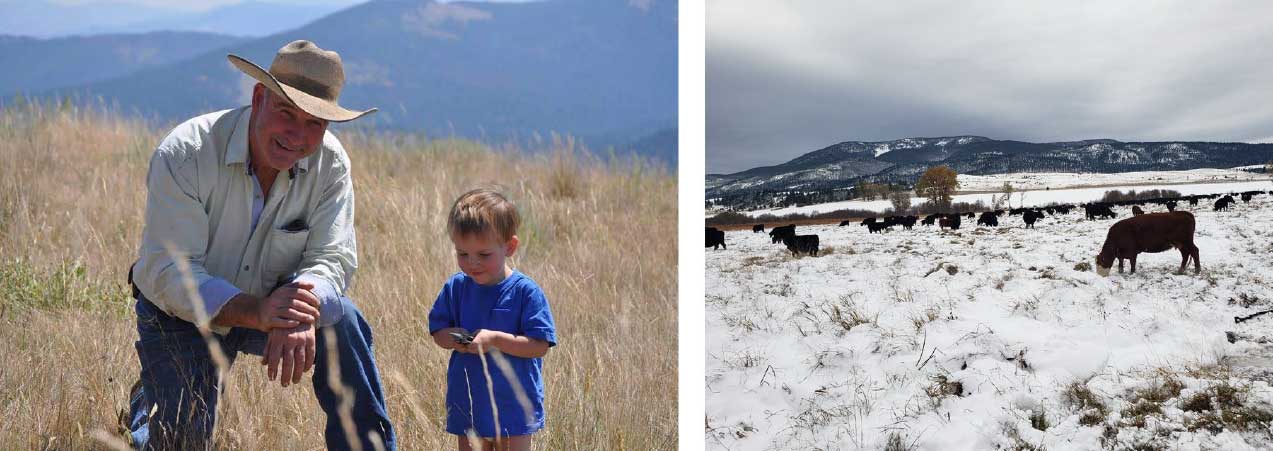
According to Ricklefs, Montana leads the nation in private land conservation in quantity and habitat quality. It’s also the leading state in utilizing Farm Bill conservation funding to ensure family farms and ranches are still in production and contributing to the economy for future generations. Compared to other states, Montana’s vast and diverse landscape, coupled with a small population, offers millions of acres of open land, including farms, ranches, and forests.
“Multi-generational families could have sold in any of the booms that the Bitterroot has seen in the 80s, the 90s, the 2000s, and certainly with where land values are now at all-time highs. But that’s not what they wanted to do,” said Ricklefs. “They wanted to ensure that their family legacy is protected and that their operation is still viable and can be passed down to the next generation, whether in their family or to the neighbor leasing it. One landowner has frequently said that completing a conservation easement on his land is a source of family pride second only to watching his kids turn out okay.”
The Future of Protecting Lands in Montana
According to Ricklefs, the question of whether Montana is fully prepared for the pace of change in the state has yet to be determined. He sees far more demand for conservation easements from Montana’s farmers and ranchers than land trusts can currently service.
“With limited resources and unprecedented demand, land trusts must be strategic in determining when, where, and how they work with families who desperately want to protect their farm or ranch now,” he said. “These limitations have real impacts on Montana’s farm and ranch families. A few landowners are in a position where they’re fortunate enough to be able to wait a year or two or more to protect their land permanently, but most aren’t. Our challenge as Montana continues to proliferate and farmers and ranchers increasingly look to conservation easements is to ensure these tools are consistent and available to landowners.”
Adequate funding is critical to meeting this demand. Montana Fish, Wildlife and Parks has also responded by boosting the Habitat Montana fund with tax revenue from state marijuana purchases. But the long-term fate of that fund is uncertain.
“We’re very grateful that Montana is a national leader when it comes to utilizing the federal Farm Bill conservation dollars,” said Ricklefs. “But we are nowhere close to having the financial resources and even the human resources available to service the demand out there for all the conservation easements across the state.”
As Montana continues to grow, one thing is for sure: Agricultural land and working ranches are feeling more pressure than ever to sell and the next ten years will be crucial for private land conservation.
“I hope this landscape remains largely intact when our kids and grandkids inherit this valley,” said Mannix. “It would be a neat legacy for our ranch to be a part of that. But protecting that will take more than just our ranch; hopefully, we’re one of many.”

